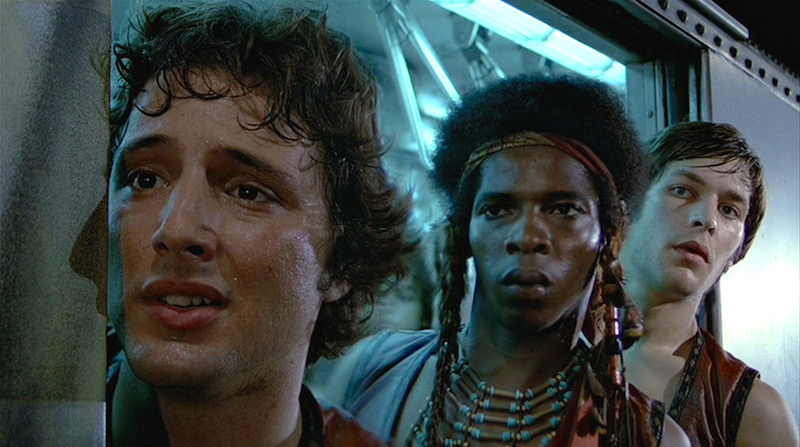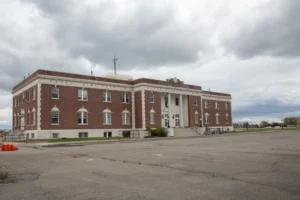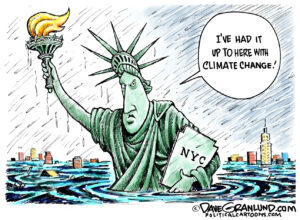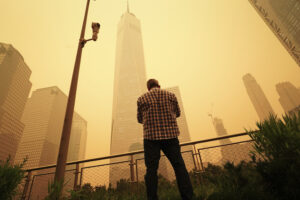An Unabashed Tribute to ‘The Warriors’ on Its 40th Anniversary
Roundly trashed by critics when the gang-themed film debuted in 1979, the cult classic's influences still creep into popular culture today. James Remar, from left, David Harris and Terry Michos get tough in "The Warriors." (IMDb)
James Remar, from left, David Harris and Terry Michos get tough in "The Warriors." (IMDb)
In the 40 years since its release, Walter Hill’s “The Warriors,” celebrated in midnight showings and online tributes, has morphed from trash to cult to, according to The Guardian’s Charles Bramesco, “classic.” Trash, cult, classic—that sounds about right. Thanks to its many reincarnations as a director’s-cut DVD, video game and graphic novel, “The Warriors” is better known today than it was the year it was released. Its enduring influence can even be seen in the latest commercial for Taco Bell.
But in the spring of 1979, the critical establishment reacted as if a cold, wet corpse had been dumped on its doorstep; it was the rare occasion when critics from the mainstream New York Times and the alternative Village Voice were in full agreement: They hated “The Warriors.” Conservatives, particularly nationally syndicated columnist Max Rafferty, called the film “violence purely for the sake of violence.”
An editorial by Desmond Ryan in The Philadelphia Inquirer called it “a sickening film that glorifies gang warfare and brutal violence … [and] has left a bloody trail of real-life mayhem and death in its wake. … In hundreds of cities across the U.S., the depraved violence shown in this movie has been blamed for inciting young people to fight, rampage and kill. …”
The hysteria was fanned by a trailer that, to a background of the throbbing score from “The Terminator” (“The Warriors” score was still in progress), warned, “These are the armies of the night. They are 100,000 strong. They outnumber the cops five to one. They could run New York City.”
“The Warriors” had just two high-profile defenders. In the March 5, 1979, issue of The New Yorker, film critic Pauline Kael stunned staid readers when she wrote, “’The Warriors’ is a real moviemaker’s movie: it has, in visual terms, the kind of impact that ‘Rock Around the Clock’ did behind the titles of ‘Blackboard Jungle.’ …The physical action is so stylized that it has a wild cartoon kick to it, like Yojimbo and the best Kung-Foo movies. The fighting is so exhilaratingly visceral, and so contrapuntal in the Oriental-martial-art-dancing manner that you have no thought of pain or gore.”
The movie had another, even more famous, supporter. After screening “The Warriors” at Camp David, President Ronald Reagan phoned lead actor Michael Beck to tell him he just had “enjoyed it immensely.”
***
The path of “The Warriors” to B-movie immortality began in 401 B.C., at the battle of Cunaxa, when Prince Cyrus challenged his brother, Artaxerxes II, for the throne of the Persian Empire. Cyrus won the battle but got himself killed, and 10,000 Greek mercenaries were stranded in a hostile land more than a thousand miles from home.
Gen. Xenophon rallied the Greeks and led them through deserts and mountains, fending off the Persian army and barbarian tribes, each with their own distinct dress and weapons. After a Homeric march, they reached Greek cities at the Black Sea, where they raised the cry “Thálatta, thálatta!” (“The sea—the sea!”). Xenophon later retired and wrote a best-seller, “Anabasis”—often translated as “The March Up Country.”
Cut to New York, 1960. An aspiring writer, Sol Yurick, quits the Department of Welfare—trust me, this will all come together—and, drawing from his experiences with what were then called juvenile delinquents, writes “The Warriors,” about a crew from Coney Island and their terrifying night returning home on subways and back streets as they fight police and rival gangs.
On the subway ride to a gang meeting in the Bronx, one of the Warriors pulls out a comic book, a Classics Illustrated—for those of you under the age of 40, those were the original graphic novels—about Greek warriors fighting their way through enemy territory to the sea and safety. The story, of course, is “Anabasis,” and the kid feels a kinship with the Greek heroes.
There was never an “Anabasis” comic from Classics Illustrated, but, as Yurick commented in the 2006 reprint of his novel, “It would have made a great comic book.”
Filmmaker Walter Hill thought so, too. He told me in an interview that he saw the story as “a kind of animated comic book.” (The DVD version of the film begins with comic panels, as Hill originally intended.) The film quickly establishes its own identity. Andrew Laszlo’s cinematography transforms New York into a phantasmic world of neon night-glo colors reflected on shiny wet pavement; it’s a demented, neo-impressionist vision. Barry De Vorzon’s throbbing synthesizer score is the oral equivalent, the music synchronized to the beat the garishly clad gang members tramp on the way to the Bronx.
The gangs are a nightmare of diversity: black, white, Hispanic, Asian, some—like the Warriors—racially mixed, and, in one of the film’s biggest surprises, female (there’s a suggestion that the most physically imposing gang is all-gay). Like the Persian tribes the 10,000 Greeks fought, each has its own signature outfit and weapons.
The Boppers, the most stylish, wear tan slacks, black shirts and metallic magenta vests with 1940s-noir fedoras; the Savage Huns dress in drab olive green, like Chinese proles; the Electric Illuminators wear bright yellow-gold silk jackets with their emblem emblazoned across the back. The Baseball Furies, from the Bronx, wear Yankees-style pinstripes (Hill wanted to use the team’s logo, but a terrified George Steinbrenner said no) and carry bats. The biggest gang, the all-black Gramercy Riffs, wear orange karate shirts and sunglasses—at night. In one of the film’s bizarre jokes, their weapon is the hockey stick.
The High Hats suggest another literary influence. Decked out in black pants with suspenders, long-sleeved, red-striped pullover shirts, corpse-white makeup and black top hats, they look like the descendants of the natives led by Daniel Day-Lewis’ Bill the Butcher in Martin Scorsese’s “Gangs of New York.” That film was based on Herbert Asbury’s highly fictionalized 1927 account of 19th-century New York street thugs. Hill’s movie seems more inspired by Asbury’s book than Yurick’s; “The Warriors” is “Gangs of New York” on amphetamines.
In the film, Cyrus (played by an unknown actor, Roger Hill) is focused on the big picture. If they stop fighting each other and unite, the gangs, led by a man of vision, would rule the city.
Cyrus’s speech, with its signature phrase, “Can you dig it?!” enthralls the delegates.
But Cyrus is murdered by Luther, leader of the Rogues, a gang that rides in a graffiti-splattered hearse. When police storm the park, nightsticks swinging, Luther puts the blame on the Warriors, who must, as one of them puts it, “juke our way back to Coney” under cover of night.
***
“The Warriors” is the ultimate New York night film—only one scene, a terrific brawl in a subway station men’s room—was shot on a set. Every scene except the final one was shot after dark. But despite its reputation as the ultimate New York street gang movie, it has little to do with real street gangs or the real New York.
A Californian, Hill knew little about the city and re-created it with a touch of fantastic realism rather than the hyperrealism of Scorsese. Hill used New York as a movie set, arranging locations to suit his story. The gang meeting at the beginning, supposedly in the Bronx’s Van Cortlandt Park, was shot in Riverside Park. The Warriors flee from there, through the magic of cinema, to Brooklyn’s Green-Wood Cemetery. Union Square station was really the cavernous Hoyt-Schermerhorn stop in downtown Brooklyn.
“The Warriors” takes place in an alternative universe populated almost exclusively by gangs and cops. There are no more than two dozen “civilians” in this world, all glimpsed from a ghostly distance. The streets aren’t just devoid of traffic, but of parked cars (except when one is needed as a target for a Molotov cocktail). Where, you wonder, do these people go during the day? Where do the Rogues park their hearse? Or the skinhead Turnbull ACs their battered bus?
There are practically no guns in this New York, so the gangs must invent more ingenious ways of creating mayhem. And, except for some weed that the Lizzies share with the Warriors, there are no drugs. It seems like a comforting thought until you realize that these characters are this way without the use of stimulants.
Contrary to its reputation, there is practically no graphic violence of the kind that was routine in action movies 40 years ago. There’s no blood, but there is nihilism, or, as film critic Jake Horsley wrote in “The Blood Poets: A Cinema of Savagery 1958-1989,” “a genuine comic book nihilism, to sell us the sheer joy of destruction.”
There’s also an element of ultimate sport. It’s an action movie grafted to the theme of a baseball game. The Warriors take the subway to an event in the Bronx, then the rest of the plot is built around their attempt to round the bases—I’d say second base was the Baseball Furies in the Bronx, home of the Yankees—and get home. The rival gangs are the other team, and the guys in blue, the cops, are the umpires who are trying to take them out of the game for breaking the rules.
Watch the Warriors clash with the Furies, the most famous action sequence in the movie:
There’s even an announcer, a DJ who reports on the Warriors’ progress between records. The DJ, whose full face we never see, was Lynne Thigpen, who died in 2004 after a career in stage and film, best known as the judge in “Anger Management.”
One of the intriguing mysteries of “The Warriors” is exactly where she is broadcasting from and for whom? Is there some kind of underground FM radio station that takes requests from street gangs?
***
The journey of “The Warriors” into pop culture legend was aided by rapper Sean John Combs, more famously known as Puff Daddy, who used Cyrus’ “Can you dig it?” as a sound bite. (In recent years, Stephen Colbert has parodied it three times.) The most famous line from the film, though, wasn’t in the script: it was improvised by David Patrick Kelly, who played Luther, the leader of the Rogues. To the clinking of soda bottles, Luther wails, “War-ree-yors, Come out to play-ay. War-ree-yors, come out to play-ay!” Fans of the Golden State Warriors often use the chant while waiting for their team to take the boards.
Luther is an engaging psychotic. “What are you so happy about?” snarls one of his gang. “I’m havin’ a good time!” he shrieks. When asked why he shot Cyrus, he responds with my all-time favorite explanation for unhinged behavior: “No reason, I just like doin’ things like that!”
Stardom eluded all the young cast, though several had long careers in TV and film. Kelly and James Remar (Ajax, strong boy of the Warriors) starred in scores of productions and worked together in Hill’s “48 Hours.” But Michael Beck, the blond war chief Swann—as chiseled as a young Viggo Mortensen when he landed the film’s plum role—had the misfortune to be cast in his next film with Olivia Newton-John in the horrid musical “Xanadu,” which threw a bucket of ice water on his career. Deborah Van Valkenburgh (a desperate street girl who takes up with the Warriors) was a New York stage actress when she was cast by Hill; she became a familiar face in movies and TV.
The only actor to achieve real acclaim was Mercedes Ruehl, who won a Tony in 1991 and an Oscar in 1992 for “The Fisher King.” She’s the undercover cop who busts Ajax after the fight with the Furies.
The director has had the longest career. Hill went on to direct, among others productions, HBO’s “Deadwood.”
Yurick, who died in 2013, insisted that “The Warriors” “is not the best of my books.” But thanks to the movie, it’s the only one likely to be remembered. Yurick meant the title of his novel to be taken ironically; Hill meant for it to be taken literally. The movie shows us what the kid reading the Classics Illustrated comic understood, even if the novelist didn’t—namely that anyone, no matter how squalid their life, can be a hero for just one night.
Your support matters…
Independent journalism is under threat and overshadowed by heavily funded mainstream media.
You can help level the playing field. Become a member.
Your tax-deductible contribution keeps us digging beneath the headlines to give you thought-provoking, investigative reporting and analysis that unearths what's really happening- without compromise.
Give today to support our courageous, independent journalists.






You need to be a supporter to comment.
There are currently no responses to this article.
Be the first to respond.